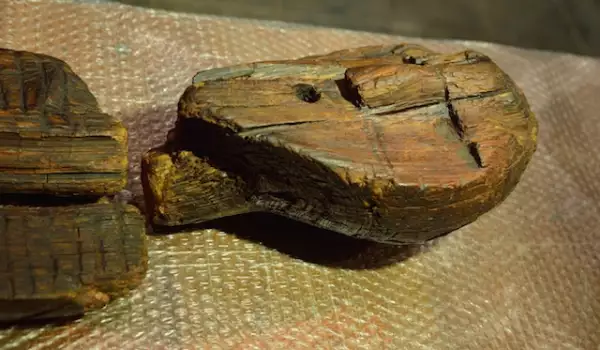The Shigir Idol - an astoundingly impressive statue, found 125 years ago under several tons of peat bog in Russia, has turned out to be the oldest wooden sculpture in the world, writes the Daily Mail. The latest analyses reveal that it is 11 000 years old or twice as old as the pyramids in Egypt.
The idol is massive, more than 16 ft (5 m) tall. Its surface is covered in mysterious symbols, which scientists believe are messages from the people that had been living during the last ice age in southern Russia. Past studies claimed that the sculpture was made 9500 years ago but this theory has been refuted by the latest analyses.
"We can safely say that the results are sensational, " says Natalia Vetrova, general director of the Sverdlovsk Regional History Museum, where the statue is on display. She adds, "We wanted the exhibit to be analyzed and dated once again with the latest technologies in the world, to dismiss any doubts as to the age of the idol."
The analyses were done in Germany in one of the best specialized laboratories in the world. Experts examined a series of 7 small wood samples, which showed the exact age of the sculpture.
The idol was first dug up from a peat bog in the Urals in 1890. The initial attempt at dating it was in 1997, 107 years after its discovery. At the time, radiocarbon dating showed that the idol was 9500 years old, which led to debate among the scientific communities.

But the latest research indicates that the idol is from the Holocene epoch. Another huge surprise was that the wood used had reached 157 years of age at the time the tree was cut down. Ancient craftsmen used stone tools to perfect their work of art.
Today the statue stands 8 ft (2.5 m) tall, even though when it was found it was more than 16 ft (5 m) high. During the Soviet era, some fragments of the idol disappeared but photos taken by the discoverers prove the idol's actual size.
"The peat bog had preserved the primitive art as if in a time capsule, " states Russian Academy of Sciences archaeologist Michail Zhilin, who has dedicated his life to researching primitive cultures.
"Standing in front of this most ancient symbol of Eurasian art, a person feels nothing but awe. We hope the idol helps us learn more about the civilization living 11 centuries ago in the south Urals, " he adds.









